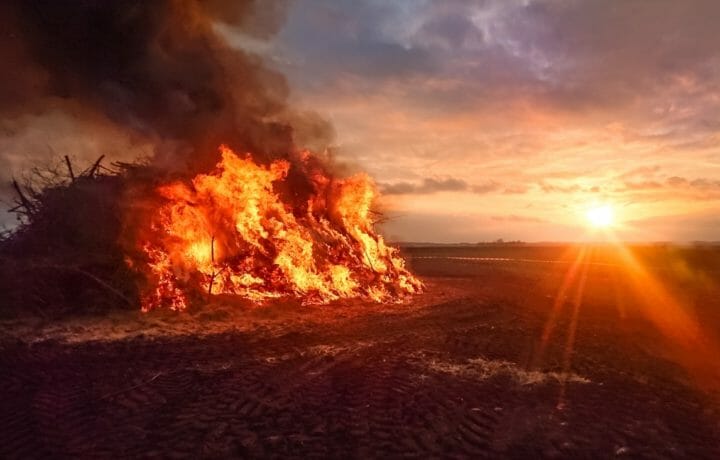“If you fail to plan you are planning to fail.” – Benjamin Franklin
When I began my year in the School of Advanced Military Studies in the summer of 2000, I did so with a certain amount of dread. Euphemistically known as the “the book of the day club,” the program for my class included a reading list just north of 300 books. This was somewhat of a concern for me. Not because I have any aversion to reading as much as how I read; I tend to savor every word, pondering a book as I read. I rarely read a book with any haste, choosing instead to enjoy a good read as long as possible.
In other words, I had good reason for the dread I was feeling.
Our first book seemed a curious choice to me. To start the new academic year, the faculty replaced Mark Bowden’s venerable “Black Hawk Down” with “Young Men and Fire,” by Norman Maclean. The lessons of Mogadishu were still fresh in our minds as we were fast approaching the seventh anniversary of Operation Gothic Serpent. I’d watched “A River Runs Through It” and while interesting, I wasn’t exactly sure how Maclean’s story of a decades-old forest fire would fill the void left by “Black Hawk Down.”
Twenty years later, I still find myself giving copies of “Young Men and Fire” to colleagues. Those who take the time to read it discover what I did when I opened the book on a June afternoon so long ago. What captivated Maclean to dedicate most of his life to studying the 1949 Mann Gulch fire was the same drive that fuels us to study failure – understanding how something that seems so simple on the surface can possess such complexity and danger in its depths. Little Big Horn. The Ia Drang Valley. Mogadishu. Mann Gulch.
On August 5, 1949, a crew of 15 smokejumpers – the Forest Service’s elite airborne firefighters – parachuted into a remote stretch of the Montana wilderness to combat a small forest fire. Like Little Big Horn, they understood the conditions in the area and experience told them what to expect when they hit the ground. Like the Ia Drang, they went in light, equipped and manned for a quick fight. Like Mogadishu, it was considered a simple “in and out” operation; they’d be back in Missoula before nightfall.
Less than two hours after arriving, all but three were either dead or fatally burned.
In the same way that Little Big Horn captivated historians for over a century, Mann Gulch haunted Norman Maclean. It wasn’t just understanding what happened, but revealing how and why people made the decisions they did, both before and during the operation. Finding those answers consumed the rest of Maclean’s life, a task made more difficult by the fact so few survived. When Maclean died in 1990, his life’s work remained unfinished, reminiscent of a certain nineteenth century Prussian. Not surprisingly, the task of finishing his manuscript was left to his family.
When I finished the “Young Men and Fire,” I understood why the faculty selected the book. Like “Black Hawk Down,” the book represented a deep exploration of failure. But it did so through a different lens, imparting many of the same lessons of Mogadishu but with a decidedly different backdrop. It helped us to understand that failure and tragedy are not the sole domain of the military, and neither are the lessons learned.
Failure is a brutal, unforgiving teacher.
We learn more from failure than we do success. Failure has a way of exposing the little things that, when combined, pave the way for bad things to happen. Taking the time to learn from past failure is a driving force behind future success.
Plan for failure.
Planning for success is a sure way to find failure. One of the benefits of red teaming a plan is identifying potential obstacles to success and applying a “what if” form of logic to each. Forcing yourself to consider all the things that can go wrong helps improve flexibility and better prepares you mentally for the “little things” that can cause an otherwise brilliant plan to end in failure.
Mental models matter.
Not unlike Custer at Little Big Horn, the smokejumpers went into Mann Gulch with a fixed mental model that determined their approach. Once on the ground, however, the conditions proved far different and they were unprepared for what ensued. Too often, our mental models are not as well-developed as we think, typically due to either a lack of experience, a lack of study, or a combination of both.
Assumptions can kill you.
A significant part of any planning effort is validating assumptions. When we neglect to revisit our assumptions, we incur infinitely greater risk, but rarely do we make an effort to mitigate that risk. Whenever we study an operation that involves fatal failure, we will inevitably discover unvalidated assumptions at the root of the planning effort.
We create our own luck.
Luck happens. Of the three men who survived the Mann Gulch fire, two were young, inexperienced smokejumpers who simply ran for their lives and somehow managed to escape the ravages of the fire. The third survived by doing something so counterintuitive (to everyone but him) that the other smokejumpers would have assumed he’d lost his mind to the fear of impending death. Never discount the impact of luck, but never count on it, either.
My understanding of “Young Men and Fire” was fueled by my own experiences as a firefighter. Even as we set aside Maclean’s masterpiece, I could feel the dread fading. Maybe the reading wasn’t going to be so bad, after all. Then came our second book, a 600-page, mind-bending tome on the beehive mind that read like something Ken Kesey would have written while on an acid trip. The dread came back with a vengeance, and I was swimming upstream from that point on.




